Countries around the world are experiencing the problem of meeting their energy needs and those of their populations as the amount of fossil fuels available in new competition decreases, coinciding with many countries’ tendencies to take advantage of the energy available in natural sources of electricity generation.
It is dominated by solar energy as a free and renewable natural source rather than a monopoly on anyone; However, the amount varies according to the geographical location invested by the countries, each in its own way through the establishment of solar power plants to generate electric power, which in this article will find a detailed talk about which includes the mechanism of action of solar energy and its types, its pros and cons, its areas of use, and the most important solar plants in Jordan, the Arab world and the world.
Solar energy and how it works
Definition of solar energy
Solar energy represents the full electromagnetic radiation found in visual light (infrared, UV, X-rays, radio waves), originates from nuclear fusion reactions within the Sun, reaching Earth through space in photons.
Solar energy is the most widespread source of inexhaustible renewable energy, convertible into different energy forms that can be used in different areas of life without any adverse impacts on the environment.
How does solar power work?
Electricity is generated by solar energy in one of two ways:
- Optical energy: using PV photovoltaics consisting of thin layers of several materials such as silicon, germanium and other materials all called “semiconductors”; Photovoltaics transform solar light radiation into a continuous CD electric current
- Thermal Energy: Means CSP Solar Concentrated Thermal Power Plants that transform the Earth’s sunlight into AC rotating power, by concentrating solar rays through the use of a reflective surface range (mirrors or lenses) to generate high heat, generating steam by heating helium, hydrogen or liquid sodium gas with high pressures, then directing it to steam turbines that manage generators that generate electricity.
This method works for central generating stations, as it benefits in complex large systems.
Solar Types
Solar energy that reaches the planet per day is sufficient to generate 200 thousand times the electricity needed per day. To benefit from it, it can be converted into two types of energy:
- Thermal Energy
Flat panel complexes are the key element in converting solar energy into thermal energy, and because the thermal energy of the planet’s solar radiation is low in density, thermal panels with a very wide surface need to be used to absorb maximum heat.
For example, a 40-square-metre thermal board absorbs only a single individual’s amount of heat, meaning that the choice of the number and size of the humidified panels is directly related to the extent of their need.
Thermal panels heat water to 90 ° C, giving 20-80% of the amount of solar energy absorbed.
Electrical Energy: Access to electricity is the most important use of solar energy by using solar photovoltaic panels consisting of a large number of semiconductor photovoltaic cells such as silicon.
Solar cells have two positive and negative layers that together form an electric circuit. When the solar cells receive the electrons release and travel through the electric circuit in a constant DC current, then turn into an AC rotating stream from the anverter method.
Types of solar power plants
The techniques used to concentrate solar radiation as a source of heat are numerous. Solar thermal power plants use heat to vaporize water and then use the resulting steam energy to power turbines that generate electric power.
Solar power plants are divided into:
- Parabolic solar power plants. The stations operate on solar complex systems consisting of special mirrors in the form of parabolic pieces that are responsible for collecting the sun’s rays, and then focus on a central tube that transfers heat to heating sites, where this heat generates the steam responsible for the operation of conventional turbines that generate electricity.
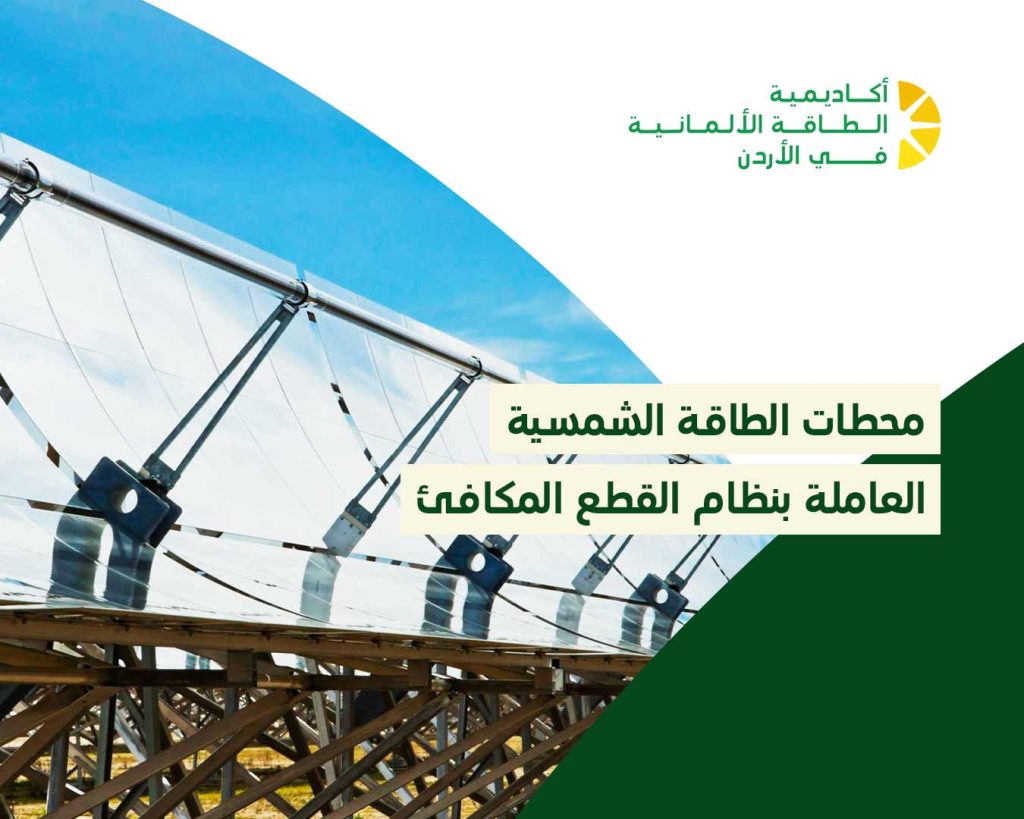
- Solar power plants with combined towers: These plants consist of a 150 metre high tower surrounded by light-reflecting mirrors in all directions, controlled by computer software that guides all mirrors towards the sun in order to reverse their radiation to the top of the tower.
Mirrors operate separately according to the angle of sunlight falling on them, and the amount beyond the tower. Mirrors shine sunshine on them on a water tank mounted on top of the tower, turning water into steam with high pressure and heat running turbines that convert steam power into electricity.
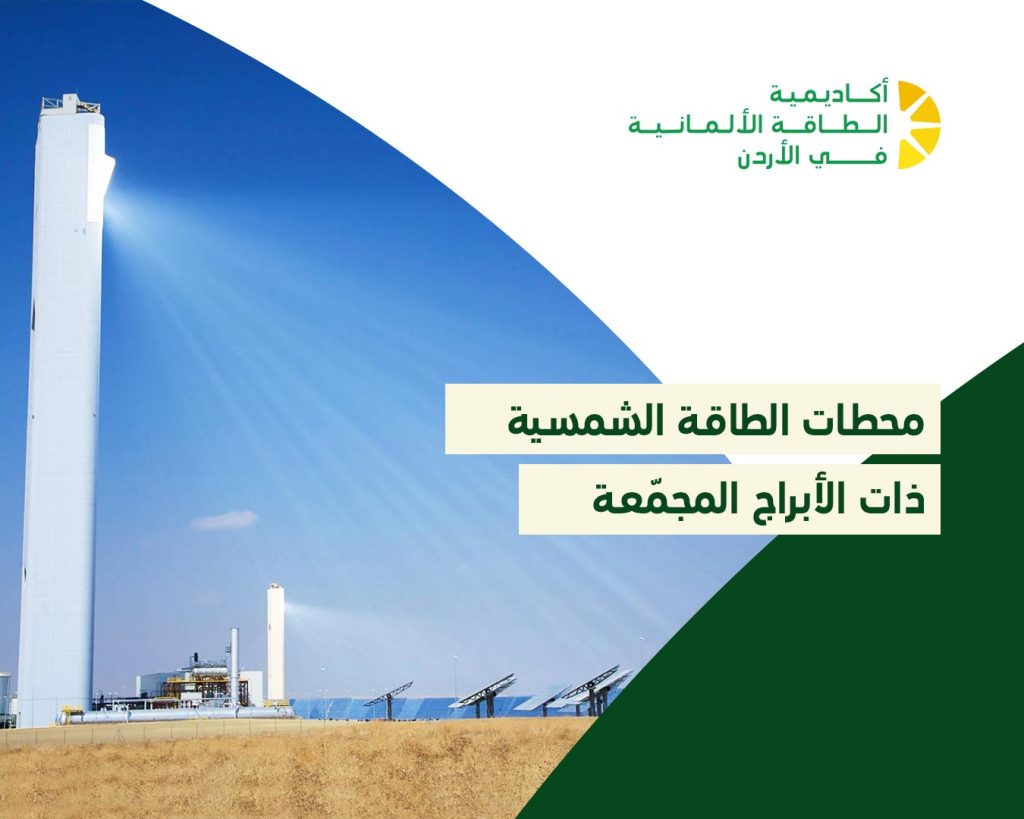
How solar cells work
A solar cell is a device that converts sunlight into electric energy in the form of a continuous current through the photovoltaic effect, and the solar cell is an essential energy provider, it does not need any fuel or chemical reaction to produce electric power.
It is useful for you to learn how it works in turning light into electricity; When sunlight falls on the cell, the cell absorbs photons in sunlight by mediating semiconductor molecules (silicon), the anti-reflective layer reserves the light falling on them, transferring it to the lower layers. The photon energy travels to electrons in the tie zone when the N-Type negative chip is exposed to solar radiation, gaining the ability to move to the delivery area to the negative chip, and the positively charged positrons “move to the P-Type positive chip, causing the voltage difference between the two chips.
The two surfaces are connected using an electrical connector, which transmits the power in an electron-passing circuit from the negative to the positive connector, to convert light power into electric energy.
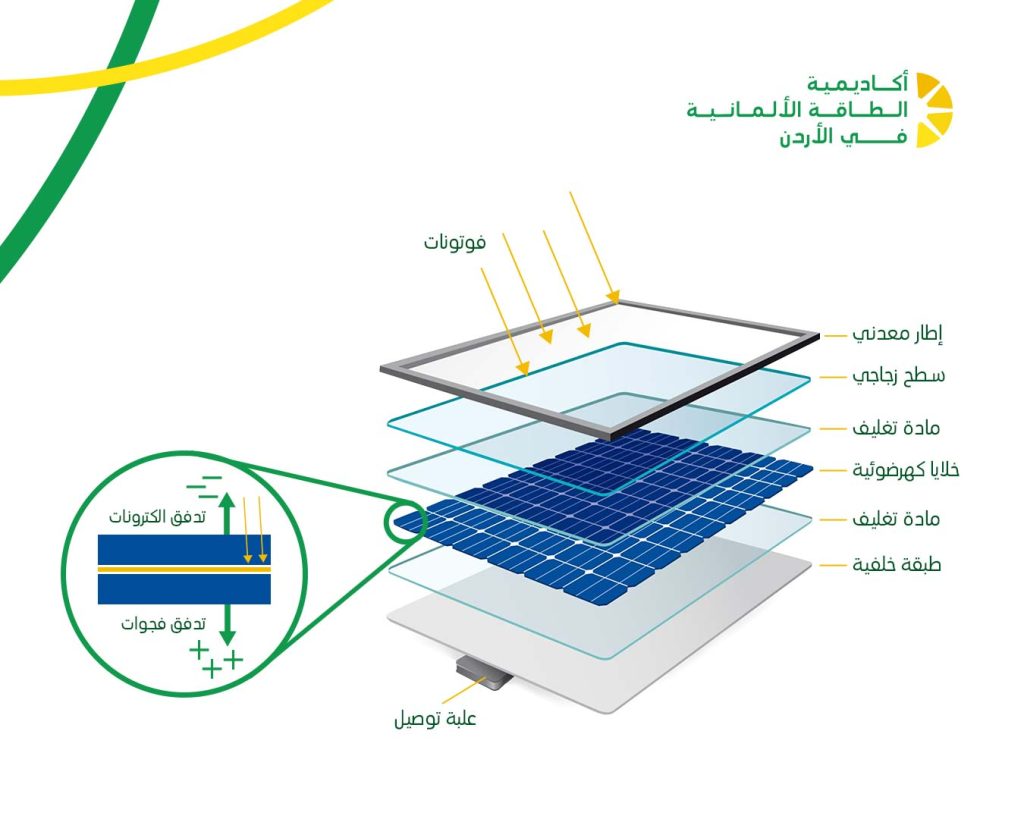
Solar power plants in Jordan, the Arab world and globally
Jordan’s largest solar power plant
- Bennouna Solar Power Plant Project
Situated in the east of Jordan’s capital, Amman, the Bennouna plant, which became commercially operational in 2020, is Jordan’s largest solar project, serving 160 thousand homes annually, and contributing to reducing CO2 emissions by 369 thousand tons per year. Besides, the Bennouna Plant project limits Jordan’s reliance on fossil fuel imports, which account for 96% of the Kingdom’s energy needs.
Abu Dhabi Future Energy Company “Masdar” developed the project under an agreement with the Ministry of Energy and Mineral Resources of the Kingdom, at an estimated cost of USD 240 million, a production capacity of 240 MW; Generate electricity of 563.3 GWh annually equivalent to 3% of Jordan’s electricity consumption per year.
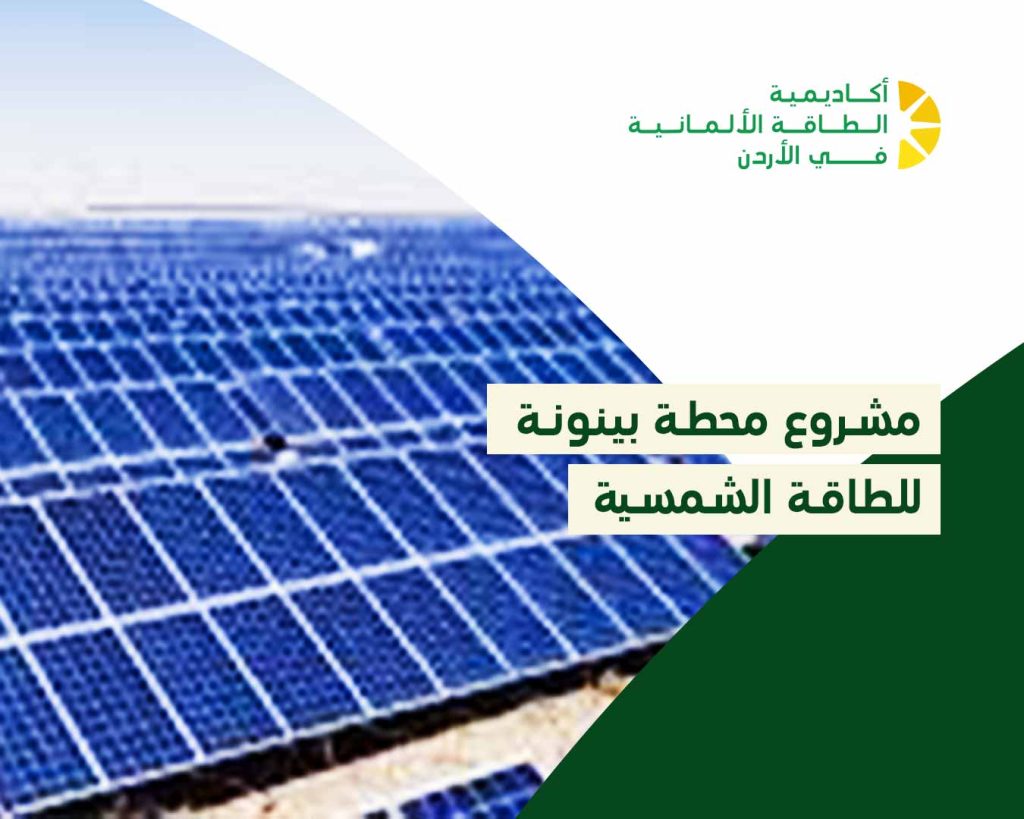
- Qawaira Solar Power Plant
Al Quwaira Station is located in the Al Quwaira Brigade in Aqaba governorate, with a capacity of up to 103 MW, and an estimated cost of $120 million funded by a grant from the Abu Dhabi Development Fund.
The plant’s production capacity is 211 GW per year (1% of the Kingdom’s daytime load), with 51 thousand units of electricity. The project was implemented through cooperation between two Emirati and Spanish companies with the participation of 85% of local contractors and 15% of international contractors in the national electricity grid.
The project came into commercial operation in 2018 with an operating life of 25 years, and a number of 328,320 solar panels adopting solar cell systems “PV” to take advantage of solar radiation and the moderate climate of the southern region, contributing to the provision of 22 jobs in the maintenance and operation stages, and more than 50 jobs during the plant construction.
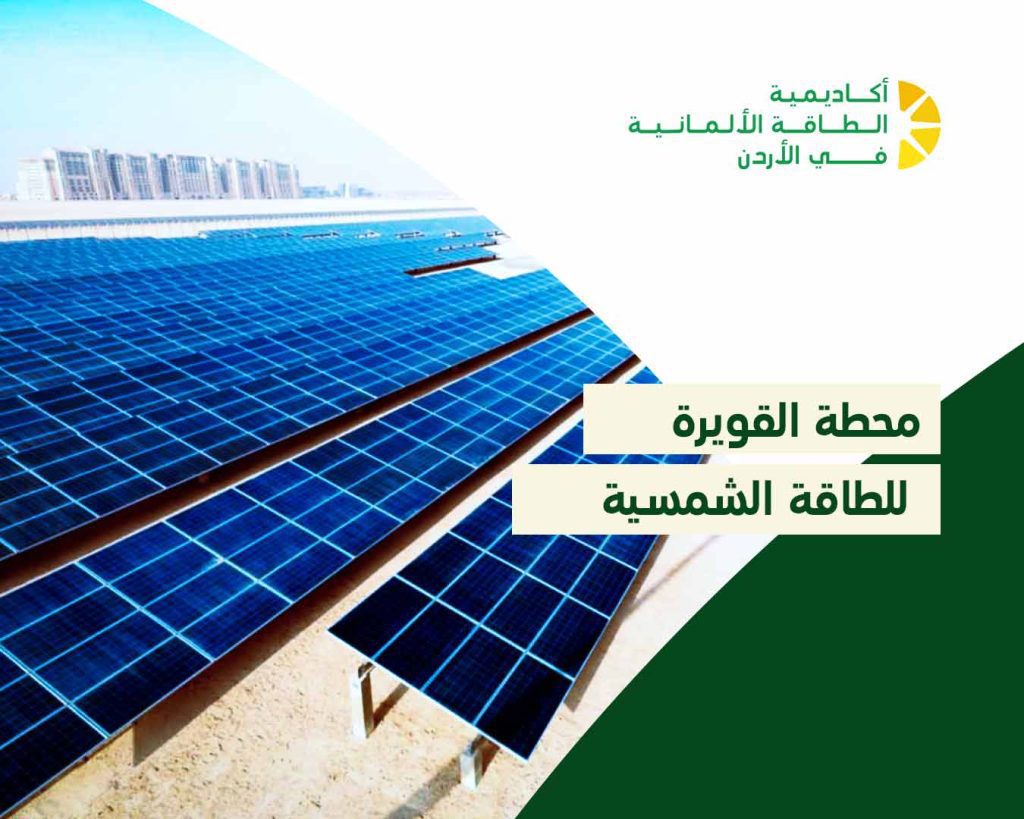
The largest solar power plants in the Arab world
- Penban Solar Power Complex
The Bunyan project has 32 1465-megawatt production plant (the equivalent of 90% high dam production) on an area of 37 square kilometres in Upper Egypt, 30 kilometres north of Aswan; In a position of solar brightness throughout the year. The project is estimated to cost 3 billion and 400 million euros, in which 39 specialized companies participated.
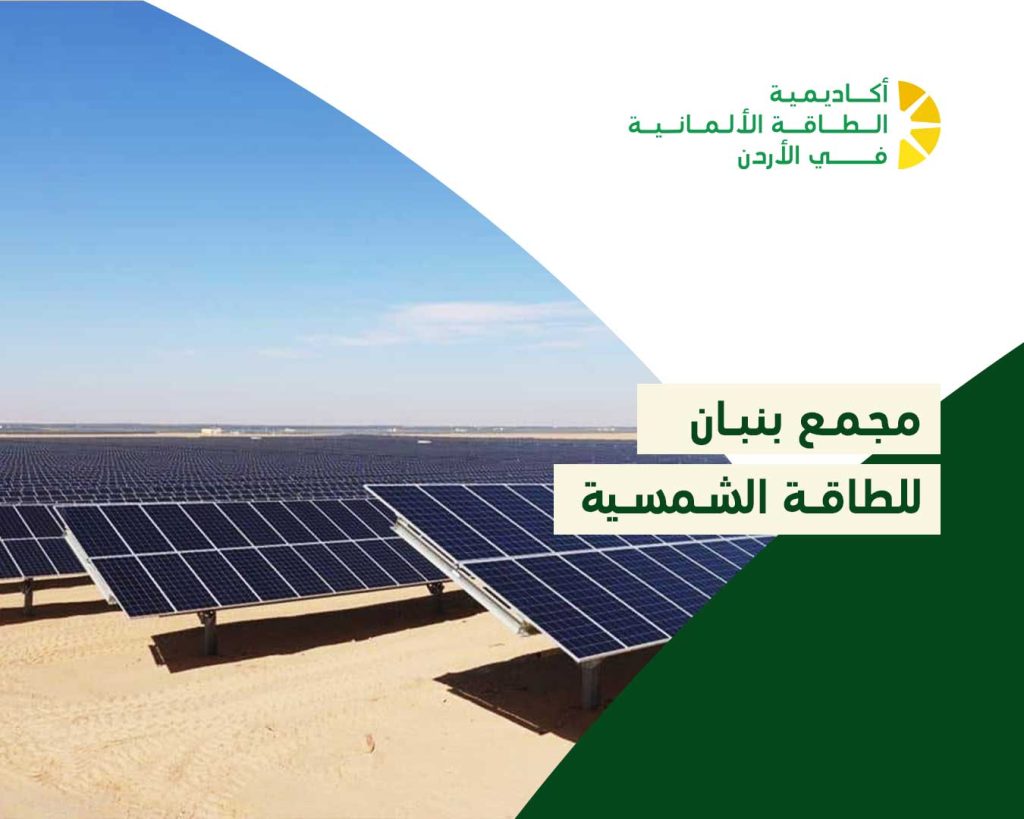
- Shams Solar Power Plant in UAE
Shams was launched in 2013 as the largest renewable energy project in operation in the Middle East at the time, near the city of Zayed, south of Abu Dhabi. Located on an area of 2.5 km2, a production capacity 100 MW and a cost of 600 million USD.
The plant is owned by Abu Dhabi Future Energy Company (60%), Total (20%) and Abingwa (20%), and has 768 thermal basins to generate electricity, contributing to a 7% supply of clean energy production capacity by 2020, reducing approximately 175,000 tons of carbon dioxide annually.
Suns1 adopts a concentrated solar power system that generates electricity from the sun’s heat rather than sunlight.
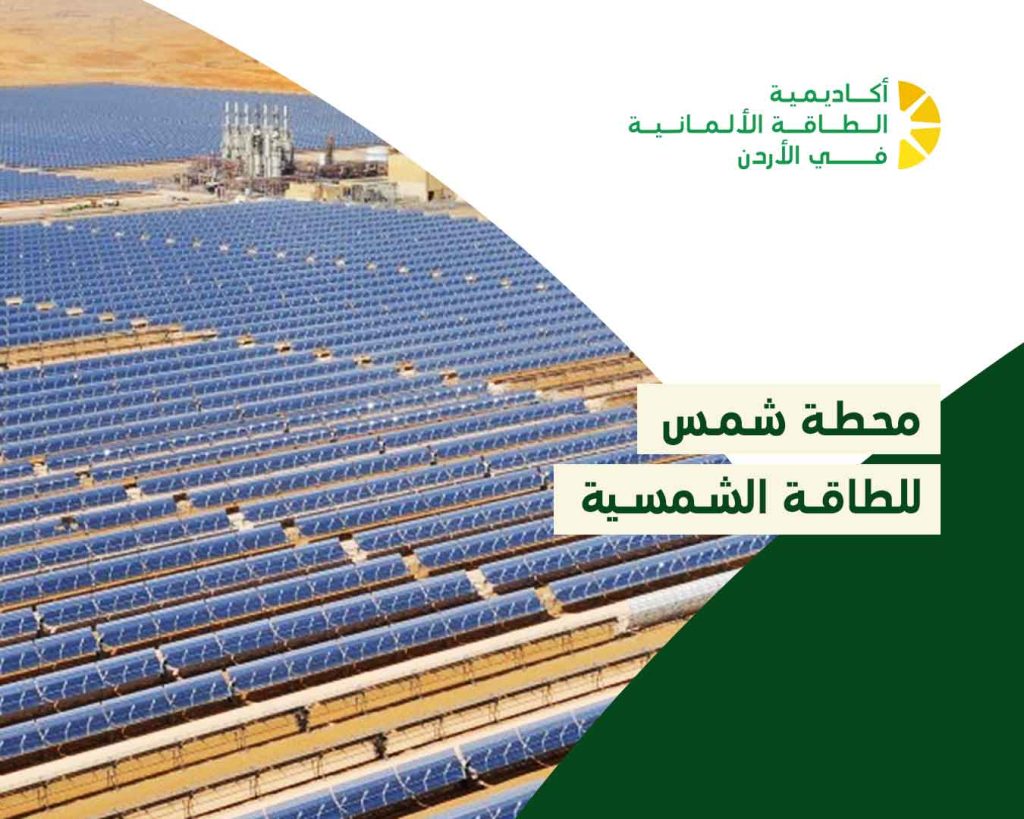
- Morocco’s Noor Warzazat Solar Station:
Warzazat Station was built in Warzazat, which features 320 days of sunlight during the year, and has an innovative system that enables the station to operate at night after the absence of the sun due to the station’s ability to retain heat in its large reservoirs.
Overnight electricity production represents about 35% of the plant’s total power, with 2 million panels spanning more than 30 square kilometres, supplying electricity to 2 million citizens across Morocco.
The plant has provided employment to more than 400 individuals and is expected to produce 50% of Morocco’s electricity needs by 2030.
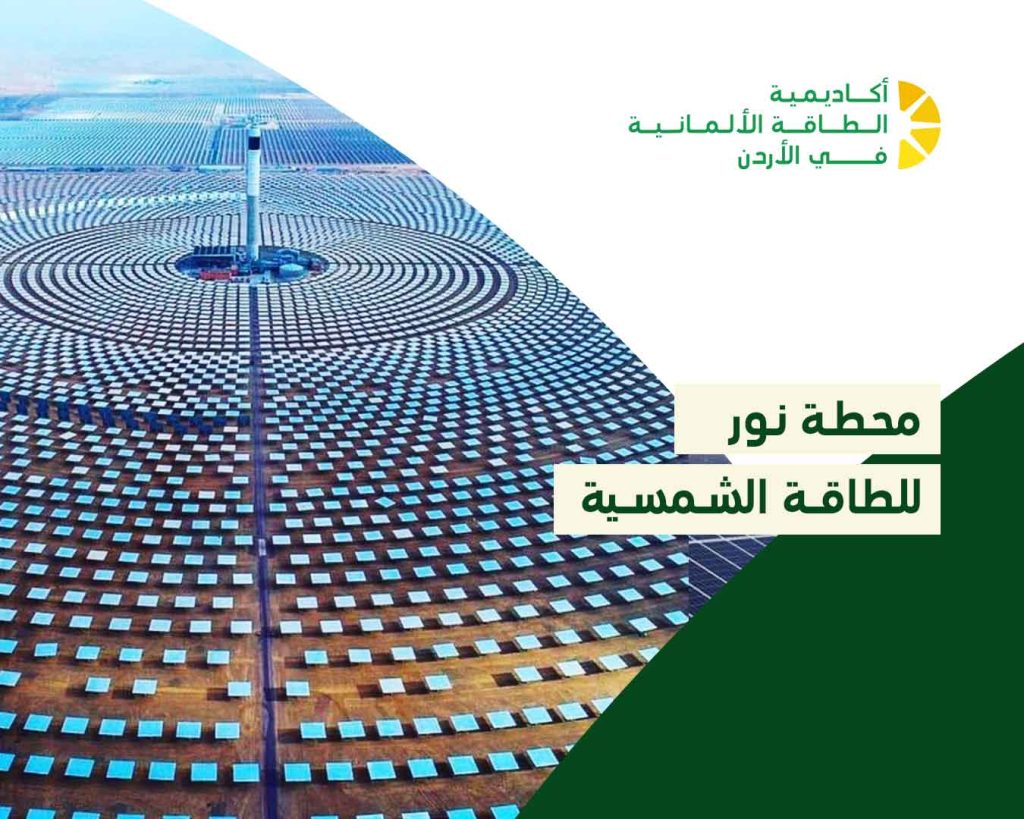
World’s largest solar power plants
- Liberia Solar Station
- Cerro Domínador Station in Chile
- Serba Solar Plant in Portugal
- Germassolar Solar Plant in Spain
Pros and cons of solar energy:
Pros of Solar Energy
- Reduce electrical consumption: Although the cost of installing solar panel cells may initially be high, their long-term benefits are clear, most notably reducing electrical consumption, and therefore a significant reduction in electricity bills.
- Reduced maintenance costs: not such as generators and devices requiring periodic maintenance cost significant amounts; Solar energy requires this only in a few cases, which means that maintenance expenses are provided on other, more important matters.
- Renewable and environmentally friendly energy source: solar energy has the advantage of being sustainable and inexhaustible, compared to fossil fuels from oil, gas and coal; The Sun sends Earth the equivalent of 73 thousand terwatts per day more than the Earth’s need for 10 times without causing any environmental damage, as a result of not producing any carbon emissions that harm the environment.
- Energy autonomy: Renewable energy, especially solar energy, provides a golden opportunity to achieve energy independence at the state or individual level: sunlight is available to all and free of charge helps to implement the necessary projects and achieve energy independence and security.
- Multiple uses: excess electric power can be used for other purposes such as: water heating, home lighting.
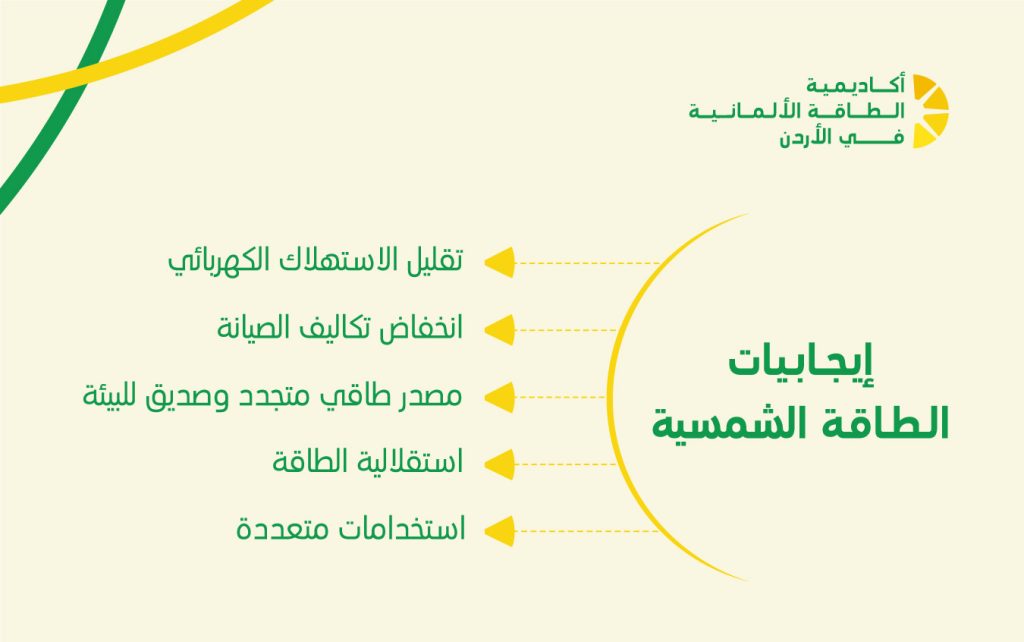
Solar Disadvantages
- High initial cost: Although renewable energies are a viable long-term option, they are initially very expensive in terms of the cost of tools for the solar system; One of the main reasons that continues to prevent it from being used and adopted as a complete and definitive solution to the problem of environmental pollution and significant electrical consumption.
- Using a large area of land: The necessary area is determined by the amount of electrical power needed, and the higher the amount, the more land area needed, for example, the production of 20 MW needs an area of more than 400 thousand square meters.
- Instability and stability: Renewable energies and solar energy are associated with climate, meaning that climate variability affects the degree of solar radiation that reaches Earth, and thus reflects the amount of electrical energy that can be generated.
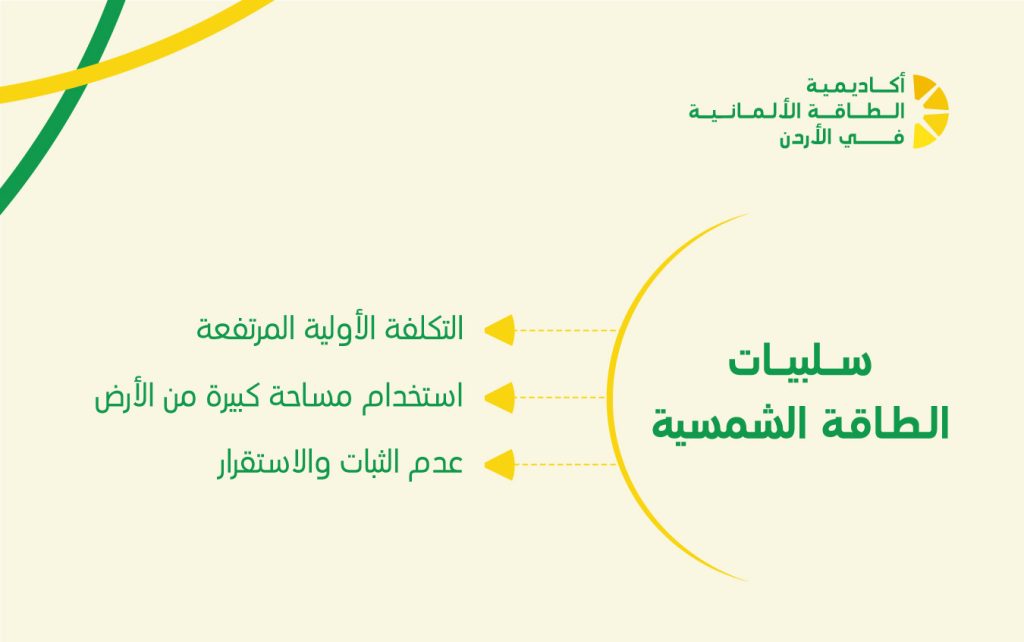
Solar Solutions
Solar irrigation:
Irrigation is the biggest challenge in the agriculture sector in light of the increasing fuel price required to operate irrigation pumps and higher transportation and unloading prices, as well as generators’ problems, maintenance and shelf life and solar irrigation is an effective solution for providing the necessary water, which can be controlled in order to secure sufficient quantities of water for plantations that prevent excess or shortage so as not to lead to soil problems that lead to crops.
Solar irrigation relies on solar-powered pumps whose solar cells produce the electricity needed for their operation, supplying agricultural crops with water, and from experience has shown to be an economically viable solution; The period of capital recovery for solar water pumps compared to diesel pumps is 4 to 7 years.
The solar irrigation system is particularly important in areas where electrical grids are available, or have poor infrastructure, and farmers turn to it to produce electricity according to their agricultural needs.
• Solar pumps
The concept of solar pumping is a recent concept in mechanics and has proved to be an economic solution due to low operating and maintenance costs, compared to internal combustion pumps and engines, and is of great importance in areas with weak or no electricity. To learn about its advantages, disadvantages and applications, follow the video
Solar pumping system consists of the following elements:
- Solar panels in order to convert the Sun’s energy into electric power in order to power the pump.
- Water pump for water pumping, running two alternating or continuous current systems.
- Solar inverter: In case the pump is running an alternating current.
- Storage sink.
- Protection cabinet with valves, cutters and protective device.
- controller for adjusting the passage current in the pump, and assumes greater importance in case the pump is running in constant current.
- sensors in order to determine the level of the pump.
- Wire plug.
- pipes
- Pump Control Unit Box
Types of solar pumps:
Pumps are classified into three main types:
- By operating current type to DC DC pumps, AD alternating current pumps.
- Depending on the type of pump to centrifugal pumps, positive displacement pumps.
- By water level and place of installation to surface pumps, submersible pumps.
Solar Home Lighting
Solar energy can be used to supply homes with their electricity need, as it is easy to install in homes and can be used not only in lighting, but in the operation of all electrical appliances, water heating and others. Only solar panels need to be installed depending on the home’s need for electricity.
• Solar Farm
A solar farm means a large facility of photovoltaic panels, converting and distributing solar energy into a central power grid, itself photovoltaic power plants, but the word farmer is commonly used when it is located in agricultural areas.
In short, it is essential for States to rely on renewable energy with its multiple sources for electricity generation, which has become the nerve of modern life; Renewable energy not only provides electricity but, if properly exploited, achieves energy independence. Is your country starting with real steps in this area? Or are her steps still shy and need more? We shared the comments.
